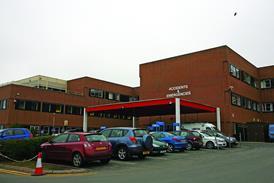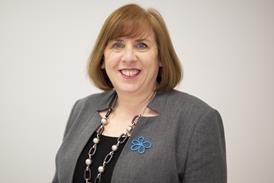When the Five Year Forward View was published, it identified three widening gaps in healthcare, while describing emerging new models of care as ‘the way the NHS of the future will look’. As we mark the two-year anniversary of the launch of the vanguards, Samantha Jones takes a look at how their work is helping to address these gaps.
The Five Year Forward View warned that we cannot achieve our vision of an improved future NHS if we ignore three key areas: getting serious about prevention, improving care and quality, and making better use of our funding.
In identifying solutions, it rightly concluded that England is too diverse for a “one size fits all” model of care that can be applied everywhere, in one stroke placing the new care models programme central to the future NHS.
Well, that future is now. We are two years into the work of the new care models programme and in that time I have witnessed some fantastic achievements from the vanguards.
We know that our social care system is under pressure and, in turn, this has placed additional strain on other services
In many cases it has simply been down to a common sense approach to planning patient journeys through their care, smoothing the way they access services – such as at The Neuro Network (The Walton Centre, Liverpool) (@WaltonCentre), where there has been a 2 per cent reduction in referrals following the introduction of new approach to the way people with headaches and migraine are cared for.
Their work has enabled more patients to be supported within primary care, offering people care closer to home and reducing pressure on the local hospital.
Unnecessary journeys
Elsewhere we have seen the benefits of harnessing new technology in improving care quality and allowing treatment to be provided in remote locations. The Five Year Forward View called on us to “exploit the information revolution”.
At the Better Care Together vanguard in Morecambe (@BCTMorecambeBay), the remote community of Millom – 50 minutes’ drive from the nearest A&E – is seeing its GPs being supported by the town’s dedicated community paramedic and a secure, high definition video link to A&E, which enables remote, specialist triage for patients with a non-life-threatening condition.
Providing this sort of treatment in the community avoids the stress that unnecessary journeys to hospital can cause for patients and families, and reduces pressure on hospitals. It also saves money. In the last 12 months the number of days spent in hospital by Millom patients admitted as an emergency has been reduced by 29 per cent.
We know that our social care system is under pressure and, in turn, this has placed additional strain on other services. Providing better care for care home residents helps reduce the pressure on GP and hospital services, including emergency admissions to hospital and delayed transfers of care.
At Connecting Care – Wakefield District vanguard (@NHSVanguardWake), 15 care homes (which are home to more than 700 residents) have aligned to 25 GP practices to keep care home residents well and out of hospital.
A dedicated multidisciplinary team is also providing proactive support in care homes, including ensuring residents are only taking the medicines they need.
As a result of these initiatives, the vanguard has reported a 26 per cent reduction in the number of days care home residents spend in hospital and a 19 per cent reduction in emergency admissions for care home residents. There has also been a 9 per cent reduction in ambulance call outs and 12 per cent fall in A&E attendances.
This is just a taste of some of the tremendous work going on across the country. What we all need now, as we continue this work, is to stop thinking of these care models as “new” and make them the norm. Future generations will look back at this period as a turning point in the way healthcare is shaped in England.
Samantha Jones is director, New Care Models Programme @SamanthaJNHS.


























2 Readers' comments